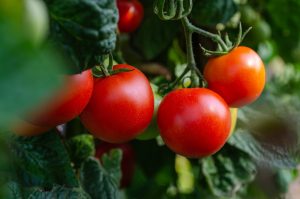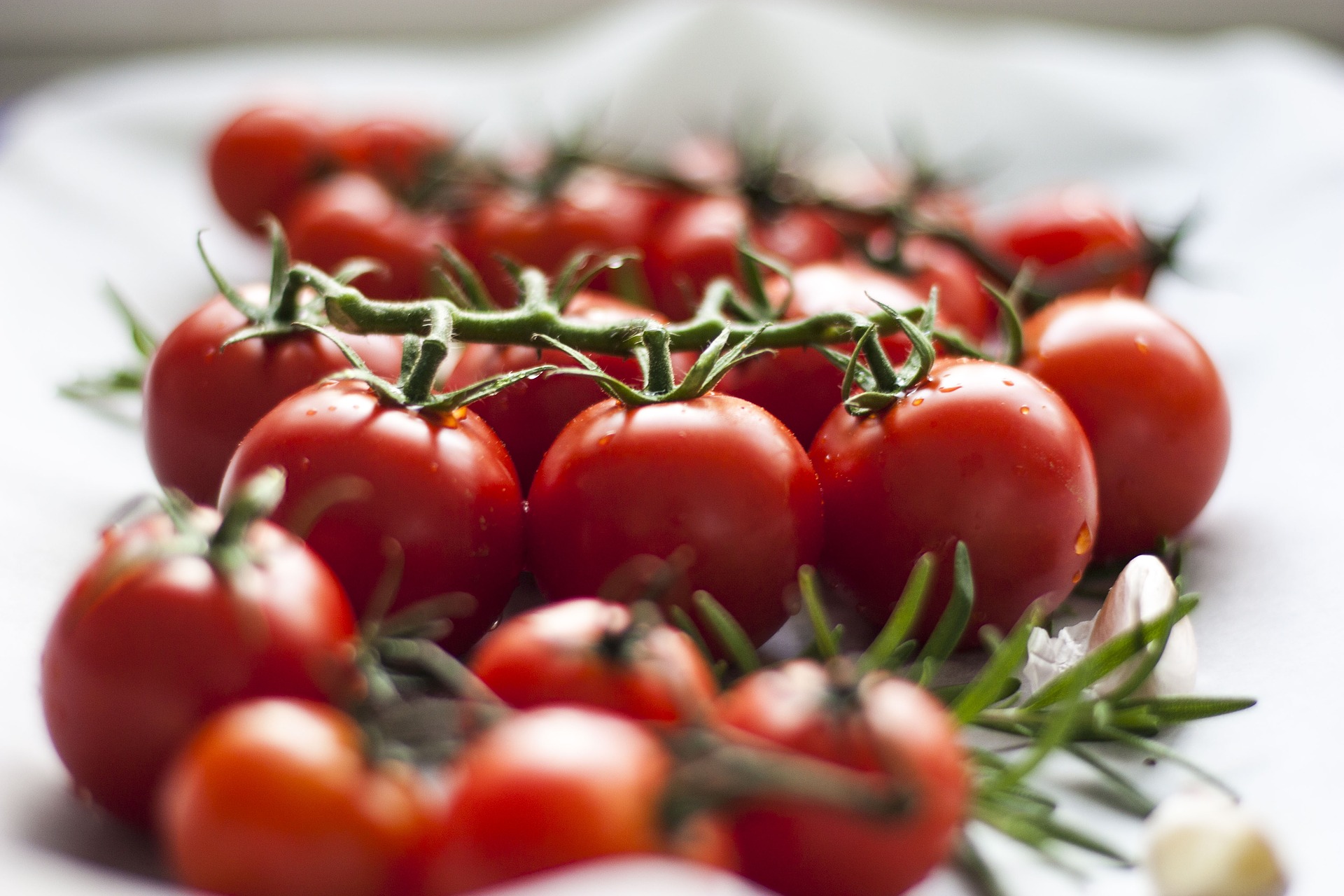The hottest days of summer are almost here, and the tomatoes are setting fruits; it is important now to water, fertilize, and stake the plants so that they will bear over a long period of time.
Water is essential, but how it is made available to the plants is the main point. If plants are watered stingily their fruits will get “bottom rot”. This is caused by the plant not being able to “uptake” enough water properly. Tomatoes are tropical plants and require lots of water.
I build earth basins at the base of each plant, at about 20” to 24” round. When I water, I take the full force of the water stream from the hose and churn up the earth around the roots. This breaks up any crusts and mixes the earth with the water, thereby making the earth hold water effectively. I do this two or three times a week, even more as the weather gets hotter.
Always water around each tomato plant before you fertilize. This will give the roots time to “uptake” water before being hit by the fertilizer. Without prior watering, the plants get shocked like getting a double cup of coffee. Then, apply the fertilizer. I have used Miracle-Gro tomato fertilizer with great success. Put two or three tablespoons of fertilizer into a two gallon sprinkling can—mix thoroughly.
Gently dribble about a quart of this on each plant making sure to wet the leaves and all, letting this liquid settle into each pre-watered basin. The results are dramatic! Notice that each meristematic (growth) tip becomes enlivened and turgid, and the leaves actually “plump up” too. Fertilize only in the morning, giving the leaves time to dry off and not collect fungi.

I do not like to have my tomatoes “blousing” or disheveled all over the ground. This looks messy, collects insects, and allows for the leaves to get dirty. So, either buy wire tomato “cages” or use sturdy eight foot, 2”x2” redwood stakes. I save these for the next year after I pull them out of the earth. Gradually train only the main stems up the stakes, tying them as they grow upward, about every foot or so at first. Cut off any weak side shoots or suckers. These sprouts are energy costly for the plant’s productivity.
Once or twice a season I like to give my plants a “shot” of fish emulsion fertilizer—a goodly slug of it in a two gallon sprinkling can. “Fish” gives the plants a treat of much needed nitrogen, replenishing that which has been leached out by the waterings. Just don’t overdo the “fish” as too much nitrogen causes the plants to develop excessive leafage at the expense of blossoms. Actually, blossoms are brought about by phosphates—hence MiracleGro tomato fertilizer.
As to timed, drip irrigation, I think that is a waste of money and actually subverts the reason for gardening in the first place. Water each plant by hand and get close to the soul- earth and observe and feel what is happening there. Mechanical devices have no feelings—people do. I always feel good at each morning ritual as I check out the growing plants.
Pick the tomatoes at “tip top” ripeness. Or, pick ‘em just before their peak and keep them on the counter near the stove where you can admire them and think of what you are going to cook. This makes me truly happy as I plan the pasta sauces and salads; or grateful like last night when my wife prepared delicious squid tomato sauce and linguini.





























